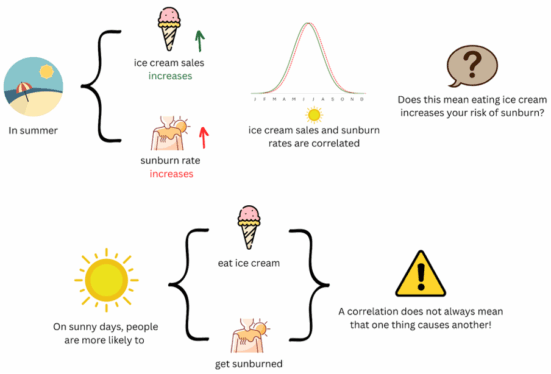The application of artificial intelligence (AI) technology across various fields has brought numerous positive changes to society, improved productivity, and reduced costs in many economic sectors. Notably, according to the International Data Corporation, a global market research company, AI is projected to contribute as much as $19.9 trillion to the global economy by 2030.
The development of faster and more efficient computers has facilitated the advancement of correlation-based AI models, such as machine learning (ML) and deep learning (DL), which can analyse vast amounts of data with high accuracy. Additionally, the emergence of large language models (LLMs) has enabled the generation of natural language and various forms of content from extensive data, supporting multiple use cases across a wide range of industries, including healthcare, finance, manufacturing, agriculture, education, security, retail, and logistics.
While correlation-based AI models are capable of analysing large volumes of data with high accuracy, they also have certain limitations. These models can identify statistical associations between variables but cannot explain the reasons behind those associations. For instance, a correlation-based model might indicate that both ice cream sales and sunburn rates increase in the summer. However, this does not imply that ice cream consumption caused the increase in sunburn rates. Figure 1 illustrates this concept of correlation.

Correlation-based AI models, such as random forests, neural networks, and deep learning, are often referred to as “black box” models. These models face criticism due to their limited explainability and may struggle to perform effectively when their environment changes and affects the patterns on which they depend on. Additionally, these models do not understand cause-and-effect relationships in the data.
In contrast, causal AI models are capable of understanding “why” things happen and “how” different variables influence each other. Causation refers to a scenario where one event (the cause) leads to the occurrence of another event (the effect). Causal AI models provide deeper insights for decision-making by analysing not only statistical associations but also the underlying reasons behind events. Most importantly, they offer the explainability and transparency that correlation-based AI models often lack. Figure 2 illustrates the difference between correlation and causation.

Causal AI models are designed to answer “what-if” questions, such as “If we increase the minimum wage, what will happen to employment rates?” or “Would the patient still have recovered if they hadn’t taken the medication?” By addressing these specific types of questions, causal AI models can be applied in various fields, such as finance and healthcare, helping stakeholders make informed decisions based on the necessary predictions. Additionally, these models can estimate the effects of potential interventions before they are implemented, which is especially important when human lives and financial stability are at stake.
The application of causal AI models has significantly benefited industries such as healthcare, finance, and manufacturing. For example, in healthcare, causal AI can enhance health risk assessments and inform more accurate decisions. While correlation-based AI models may flag individuals at high risk for heart disease based on factors such as a sedentary lifestyle, high cholesterol, and family history, causal AI can pinpoint insufficient physical activity as the primary risk factor, indicating that cholesterol plays a less significant role. This leads to more personalised and effective prevention strategies for patients.
Similarly, in finance, causal AI has relevant applications. Although correlation-based models for loan approvals may predict the likelihood of loan repayment using historical data, they do not reveal the actual factors influencing repayment. For instance, while a model may find a correlation between a borrower’s postcode and their repayment likelihood, it doesn’t imply that changing the postcode will affect loan repayment. In contrast, a causal model can identify factors like increasing borrower income, which positively impacts their ability to repay loans.
In the manufacturing sector, causal AI can be used for product quality inspection. Traditional machine learning systems may flag defects based on dimensional check failures or abnormal torque readings. However, product quality might remain consistent over time and then suddenly decline. A causal AI model can uncover the actual root causes of product defects, linking them primarily to worker skill levels and machine settings. This insight enables effective interventions, such as enhancing training programs for workers and refining machine calibration procedures.
Compared to correlation-based models, causal AI has the potential to significantly enhance decision-making across various industries, including healthcare, finance, and manufacturing. However, its adoption can be challenging, requiring interdisciplinary teams with strong expertise in data science to collaborate with relevant stakeholders who possess domain knowledge. This process can be costly, as domain expertise is crucial to ensure that predictions made by causal AI models are interpreted correctly. In summary, the successful deployment of causal AI models across various industries will depend on how effectively these challenges are addressed.



